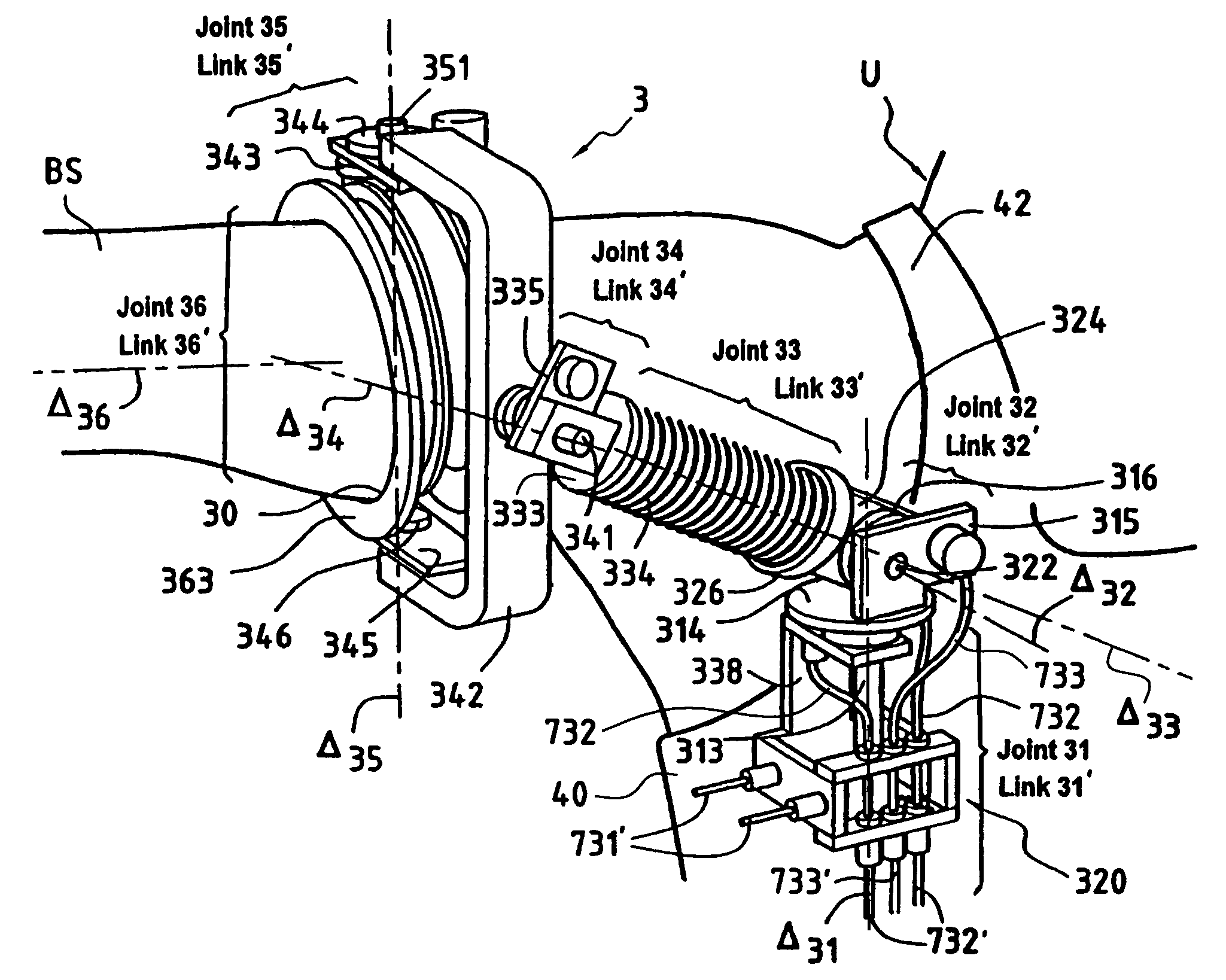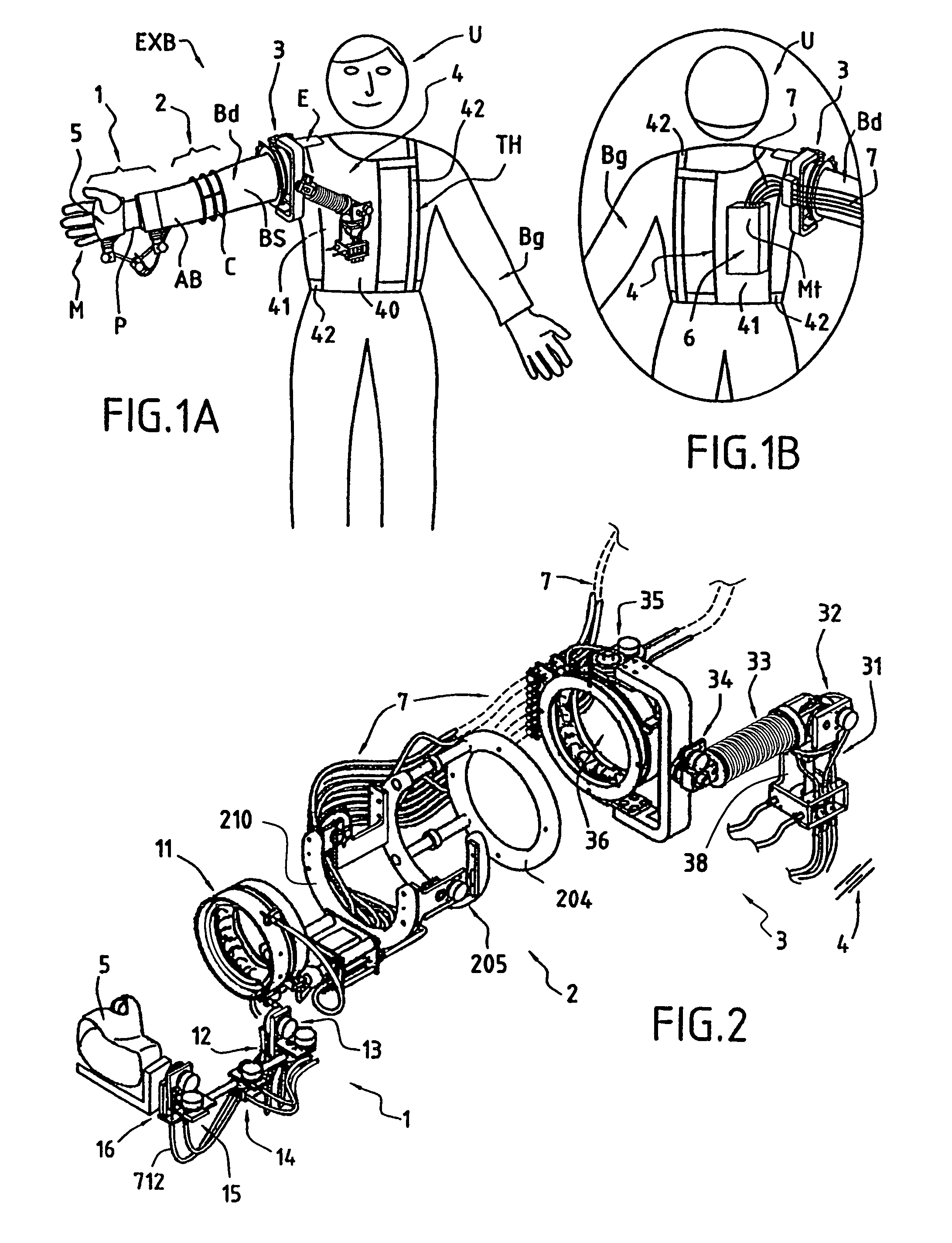Exoskeleton for the human arm, in particular for space applications
a human arm and exoskeleton technology, applied in the field of space technology, can solve the problems of difficult to produce a system that is genuinely, difficult to feel all of the movements of the human arm, and difficult to replicate, so as to reduce the number of operations the astronaut can perform, and reduce the difficulty of production
- Summary
- Abstract
- Description
- Claims
- Application Information
AI Technical Summary
Benefits of technology
Problems solved by technology
Method used
Image
Examples
Embodiment Construction
[0073]In the description below, as mentioned above and without any limitation as to scope, reference is made to the context of the preferred application of the invention, namely that of an operator remotely controlling the operations of a humanoid type robot in space working outside a space station, the operator (e.g. an astronaut) wearing an arm exoskeleton of the invention.
[0074]The robot does not directly contribute as such as to the invention and it is not shown in the figures. A priori, any robot of the prior art can be implemented in the context of the invention without needing modification.
[0075]In a manner that is well known for applications of this type, it is common practice to provide data communications between the robot and a fixed station (located in the space station and / or on earth), or to provide communications directly between the robot and a data processor system associated with the exoskeleton. It is possible to use any both-way data transmission means, and advan...
PUM
 Login to View More
Login to View More Abstract
Description
Claims
Application Information
 Login to View More
Login to View More - R&D
- Intellectual Property
- Life Sciences
- Materials
- Tech Scout
- Unparalleled Data Quality
- Higher Quality Content
- 60% Fewer Hallucinations
Browse by: Latest US Patents, China's latest patents, Technical Efficacy Thesaurus, Application Domain, Technology Topic, Popular Technical Reports.
© 2025 PatSnap. All rights reserved.Legal|Privacy policy|Modern Slavery Act Transparency Statement|Sitemap|About US| Contact US: help@patsnap.com



